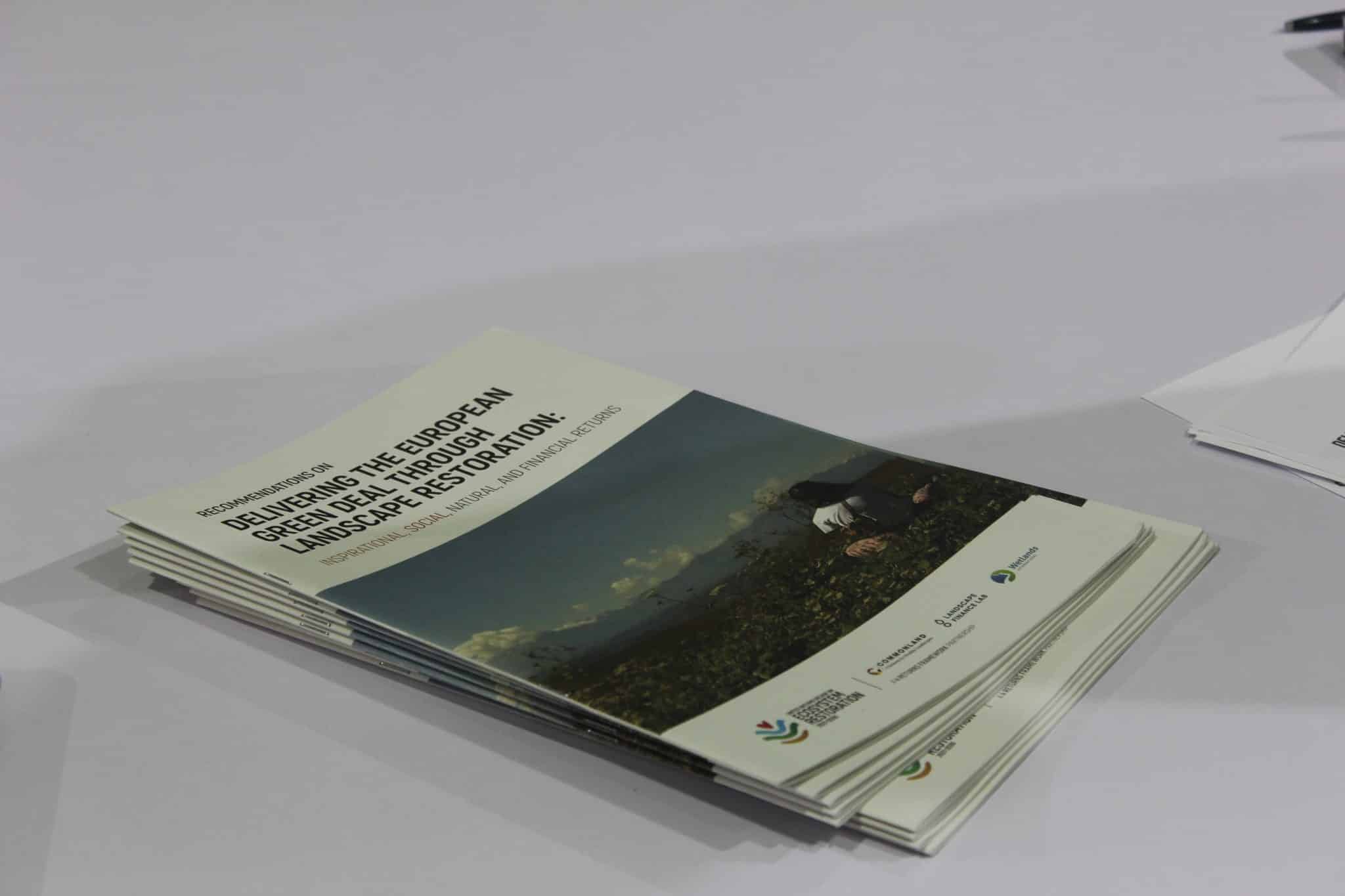Climate KIC and partners publish recommendations to include systemic landscape thinking into EU policies to achieve the Green Deal

The European Green Deal represents a unique opportunity for Europe to become the first climate-neutral continent and put nature on track to recovery. Until now, climate, ecological, agricultural, energy, socioeconomic and health challenges have typically been tackled in silos.
Yet, to effectively reduce global greenhouse gas emissions, meet the 1.5°C Paris Agreement and the EU’s Nationally Determined Contributions targets of 55 per cent by 2030, whilst curbing and reversing the loss of Europe’s biodiversity and soil degradation, integrated and systemic action is essential.
Climate KIC worked together with Commonland, the World Resources Institute, Gold Standard Foundation, The Nature Conservancy, Landscape Finance Lab and others to offer guidance to EU institutions and Member States on why and how to leverage holistic landscape restoration to efficiently deliver the European Green Deal.
Read the recommendations (PDF)
“The work on landscape and land use is about creating resilient agriculture. It is about finding a holistic approach and integrating the restoration of all the natural regulatory functions of a territory. But today we are witnessing a lot of biodiversity degradation, which leads to landscape and ecosystems restoration issues,” explains Daniel Zimmer, Director of Sustainable Land Use, Climate KIC, who participated in writing the paper and the recommendations.
Landscapes and seascapes are compositionally diverse and spatially heterogeneous. They are mosaics of interacting components resulting from biophysical, socioeconomic, cultural and political processes. The landscape approach allows combined action across the social and cultural values of people living in and shaping them. It aims to balance the unavoidable tensions between production and conservation in participatory and inclusive approaches. It is the only approach that can secure sustainable, climate-resilient and regenerative natural systems that can address the complex environmental, social and economic challenges we face.
“The brief brings together organisations and contributors from across policy sectors – finance, climate, environment, agri-food, innovation, and social and economic development. As the challenges we are facing are interlinked, we need to think and act together coherently,” says Victoria Gutierrez, Head of Policy for Commonland.
For Daniel Zimmer, the ways we work in agriculture and forestry, for instance, have a huge impact on biodiversity, livelihoods and nature’s ability to restore itself.
“Intensive agriculture or forestry are an industrialisation of nature, which comes with an inevitable degradation of the landscape. When we produce certain crops or clear-cut trees in an intensive way, we destroy or displace a large number of species, including insects, plants and birds. These industrial approaches make the natural restoration functions of nature very challenging.”
“Another example,” he adds, “is the capacity of water resources to purify all the waste from sewage treatment plants. This capacity is easily threatened if there is too much nitrogen and phosphorus in rivers. What we have done is destroy the capacity of these natural systems to restore themselves. And it isn’t well-known, but nitrogen and phosphorus flows are two of the three planetary limits that have been exceeded for a long time (with biodiversity), which contributes to the nature’s destabilisation.”
The idea behind the paper that is being released today at COP27 is therefore to highlight the importance of using integrated, holistic and systemic approaches at the territorial level. Zimmer explains: “We can’t continue to work in silos, with for instance an agricultural policy on the one hand and a disconnected forestry strategy on the other. We need to think about how to regenerate and to rebuild all the natural functions and the associated ecosystem services of nature. And if we want ecosystems to retain their capacity to restore in the future, we must maintain their natural state as much as possible. It is the resilience of societies that is at stake.”
A focus on landscapes allows for fostering strong multi-stakeholder partnerships to placing people at the centre of interventions and enabling local communities to be meaningfully engaged in decision-making related to land and water, ensuring their needs are properly addressed, and therefore improving equitable environmental and socio-economic outcomes for present and future generations is essential. It also serves as a common ground to connect, integrate and deploy policies at various scales, it offers opportunities to foster strong multi-stakeholder partnerships, and to advance on multiple fronts at the same time.
“Building landscape resilience is essential for the communities, explains Zimmer. Farmers, for instance, want to ensure that they will be able to continue to produce their crops in the future, despite the droughts, the reduction of soil fertility, soil erosion, etc. These are climate-related threats that they take very seriously, and for them, the biodiversity and preservation of the soil’s health is at least as important as reducing emissions.”
Climate KIC applied this thinking in our work with the Irish government, where we’ve integrated agriculture, forests and peatlands into an overall landscape approach that tackles carbon, biodiversity and resilience.
Daniel Zimmer spoke at a few sessions at COP27, including a session with 1000 Landscapes for one billion people, on the potential of landscape-level finance to build climate resilience. Visit our COP27 dedicated page for more information or watch the recording, and listen to the first episode of Climate KIC’s podcast How Could We, an interview with Daniel Zimmer about our Climate Smart Forest Economy Programme and how to substitute fossil-based products by wood.
Listen to the podcastClimate KIC at COP27
Recommendations include:
- The Commission should unequivocally promote holistic landscape restoration, and with it, stakeholder and right-holder engagement, and the publication of new guidelines informing national restoration plans.
- National restoration plans should include restoration measures designed to develop shared purpose, vision and responsibility among landscape stakeholders.
- The Commission should ensure that all EU policies are aligned with preserving and restoring Europe’s biodiversity and natural capital at the landscape scale.
- The Commission should promote national restoration plans that empower and invest in community-driven landscape restoration programmes that have demonstrable pathways for social investment and impact.



